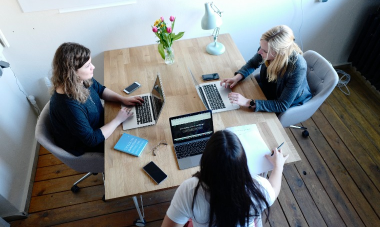Men have long dominated Australia’s construction industry. And now, women are increasingly claiming their rightful place on construction sites, wielding hammers and hard hats with as much skill and determination as their male counterparts.
In recent years, there has been a significant push for gender equality and diversity. While progress has been made, however, the path to equality in this traditionally male-dominated field is not without its obstacles. One pervasive issue that continues to plague women in construction is the persistent problem of sexual harassment.
In this article, we’ll delve into the realities of sexual harassment within the Australian construction industry, examine the barriers faced by women, and explore ways to create a safer and more inclusive work environment. Along the way, we’ll be inspired by the stories of women who have bravely navigated these challenges and emerged stronger.
Understanding the Enemy: What is Workplace Sexual Harassment?
Before we can effectively combat sexual harassment, it’s crucial to understand its insidious nature. Defined by the Australian Human Rights Commission, workplace sexual harassment encompasses any unwelcome sexual advances, requests for sexual favours, or other verbal or physical conduct of a sexual nature that creates a hostile, intimidating, or degrading work environment. It’s important to remember that sexual harassment can come in many forms, from subtle gestures and inappropriate comments to unwanted touching and even sexual assault.
in the construction industry, forms of sexual harassment may include a hostile work environment, unwanted sexual advances, and other inappropriate behaviours. In addition, the National Women’s Law Center reveals the forms in which sexual harassment could take in their survey:
The Harsh Reality: Sexual Harassment in Australian Construction
Statistics paint a concerning picture of the reality faced by women in construction. A 2021 report by the National Association of Women in Construction (NAWIC) revealed that a staggering 51% of women in the industry have experienced sexual harassment on the job. This number rises to 63% when considering unwanted touching and groping. The Australian Human Rights Commission’s fifth national survey revealed that one in three workers experienced sexual harassment at work in the last five years, with women being far more likely than men to experience workplace sexual harassment.
These figures expose a culture of disrespect and discrimination that no woman should be forced to endure.
Breaking Down the Barriers: Challenges Faced by Women
Several factors contribute to the prevalence of sexual harassment in construction. The male-dominated environment can foster a culture of sexism and misogyny, where inappropriate behaviour is often normalized or even ignored. The hierarchical nature of the industry, with limited avenues for reporting and fear of retaliation, further silences victims. Additionally, the demanding physical nature of the work can lead to a culture of “roughhousing” and inappropriate jokes, blurring the lines of acceptable behaviour.
There are other barriers women face in the construction industry, including safety concerns, gender stereotypes, gender segregation, poor communication, and the sector’s ignorance of the problem. These are important factors that place barriers to women’s career advancement.
Seeking Solutions: Government Initiatives and Their Inadequacies
The Australian government has implemented several initiatives to address sexual harassment in the workplace, including the Respect@Work Report and the introduction of stop sexual harassment orders. While these measures represent a step in the right direction, concerns remain about their effectiveness in the construction industry. Critics argue that the complaint process is often lengthy and complex, discouraging victims from coming forward. Moreover, enforcement mechanisms may not be robust enough to deter perpetrators or adequately support victims.
Building a Better Future: Creating a Safer Workplace
Creating a culture of respect and inclusion within the construction industry requires a multi-pronged approach. Companies can actively promote zero-tolerance policies towards sexual harassment, provide comprehensive training for all employees, and establish clear reporting procedures. Fostering open communication and encouraging bystander intervention are also crucial steps. Ultimately, creating a safe and inclusive work environment requires a shift in mindsets, where respect and professionalism are the cornerstones of everyday interactions.
Hope in the Face of Adversity: Inspiring Stories of Resilience
Despite the challenges, countless women in construction are breaking down barriers and paving the way for a more equitable future. Take, for example, the story of Sarah, a carpenter who faced persistent verbal harassment from her male colleagues. Instead of letting it silence her, Sarah reported the abuse to her supervisor and spearheaded efforts to implement anti-harassment training within her company. Today, Sarah is an advocate for workplace safety and inspires other women to speak up against injustice.
Your Voice Matters: A Takeaway for Women in Construction in 2024
Sexual harassment is a complex issue, but it is not an impossible one. As a woman in construction in 2024, remember that you have a voice. Do not be afraid to speak up against inappropriate behaviour, utilize available reporting channels, and seek support from colleagues, unions, and advocacy groups. Together, by raising awareness, demanding change, and supporting one another, we can build a construction industry where women can thrive without fear or harassment. Let the sound of progress, not the silence of fear, ring true in the halls of Australian
In conclusion, sexual harassment remains a significant issue in Australia’s construction industry, and women continue to face unique challenges in navigating this issue. However, by shedding light on this important issue, sharing empowering stories, and taking practical steps towards creating a safer and more inclusive work environment, we can inspire change and create a brighter future for women in the construction industry.







